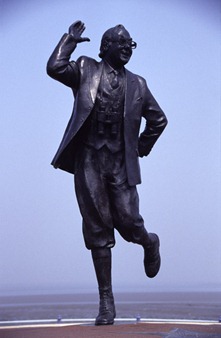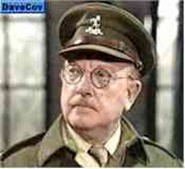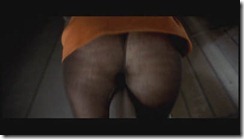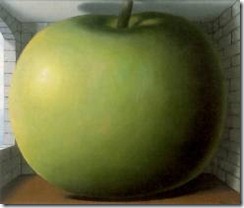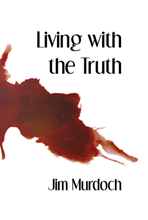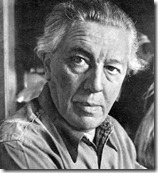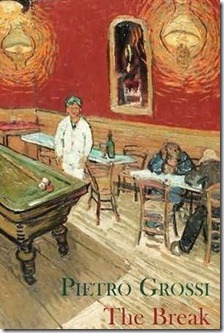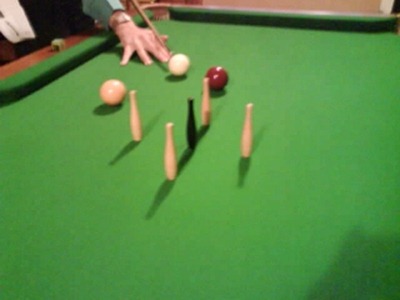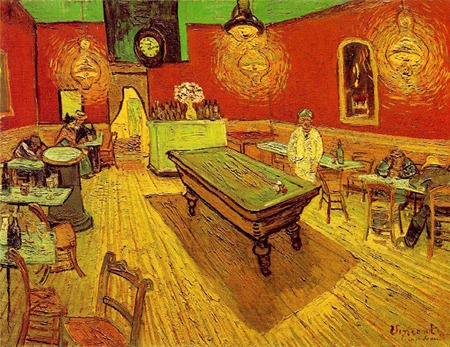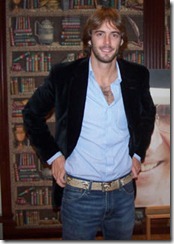
[W]hat one learns when young haunts one longest – AS Byatt, 1991 lecture
Dame Antonia Byatt has long had a deep and abiding interest in fairy stories and myths, particularly Norse mythology. References to it appear periodically in her work most notably, until recently, in Possession where one of the two fictional poets, Ash, writes a long, twelve-volume poem based on Ragnarok that is referenced a number of times through the novel. In a conversation in Possession between the academic Maud Bailey and Roland Mitchell, a post-doctoral student, Maud asks:
‘And you? Why do you work on Ash?’
‘My mother liked him. She read English. I grew up on his idea of Sir Walter Raleigh, and his Agincourt poem and Offa on the Dyke. And then Ragnarök.’ He hesitated. ‘They were what stayed alive, when I’d taught and examined everything else.’
Maud smiled then. ‘Exactly. That’s it. What could survive our education.’
‘They were what stayed alive, when I’d taught and examined everything else.’ One of her characters may be uttering those words but I suspect there’s more of Byatt speaking here than she perhaps intended. Byatt acquired a hunger for fairy tales and myths in the dark days of the blackout during World War II and they have stayed with her all her life – she’s seventy-five this year. In her introduction to The Annotated Brothers Grimm Byatt has this to say:
I read early and voraciously and indiscriminately – Andrew Lang's coloured fairy books, Hans Christian Andersen, King Arthur, Robin Hood and my very favourite book, Asgard and the Gods, a German scholarly text, with engravings, about Norse mythology, which my mother had used as a crib in her studies of ancient Norse. I never really liked stories about children doing what children do – quarrelling and cooking and camping. I liked magic, the unreal, the more than real. I learned from the Asgard book that even the gods can be defeated by evil. I knew nothing about the Wagnerian Nordic pageantry of the Third Reich.[1]
 It is no wonder that when Canongate offered her the opportunity to be a part of their Myth Series, which has already featured reimaginings by the likes of Jeanette Winterson, Margaret Atwood and Philip Pullman, she jumped at the opportunity, and her myth of choice: Ragnarok: The End of the Gods. Most of us are more familiar with the title Twilight of the Gods (Götterdämmerung), which is how Wagner’s last opera in his cycle The Ring of the Nibelung is generally rendered in English, but that is incorrect, as Byatt explains:
It is no wonder that when Canongate offered her the opportunity to be a part of their Myth Series, which has already featured reimaginings by the likes of Jeanette Winterson, Margaret Atwood and Philip Pullman, she jumped at the opportunity, and her myth of choice: Ragnarok: The End of the Gods. Most of us are more familiar with the title Twilight of the Gods (Götterdämmerung), which is how Wagner’s last opera in his cycle The Ring of the Nibelung is generally rendered in English, but that is incorrect, as Byatt explains:
[Asgard and the Gods] explained that ‘Ragnarök means the darkening if the Reign, i.e. of the gods, hence the Twilight of the Gods; some however explain the word Rök to mean Judgement, i.e. of the gods’. The Twilight is particularly pleasing, thought etymologically wrong, it appears – it is Ragnarök, judgement or destiny (ragna is the plural of Regin). Ragnarökkr would indeed mean twilight of the gods, but it is, we are told, a misreading.
I was quite unfamiliar with these myths. I’ve no doubt that Arthur Mee included them in his Children’s Encyclopaedia which was my constant companion growing up but, as a child, I was more drawn to Grecian and Roman mythologies; the Norse gods only existed for me in Marvel comics and any other version was just plain wrong. Briefly, then, this is what the Ragnarok is all about:
Ragnarök is a Norse myth that tells of the 'final destiny', 'fate', or 'doom' of the gods and of the end of the earth itself. It foretells three long winters, the earth plunged into darkness and beset by earthquakes, a great battle involving the gods, and finally the covering of the earth with water, extinguishing life. The earth will then re-emerge, fertile and idyllic, to be repopulated by just two remaining humans (Líf and Lífþrasir). The gods will also return or be reborn. The written source material for the Ragnarök story comes from the Poetic Edda and the Prose Edda.[2]
Needless to say the Marvel version had to go one better.
For untold millennia the Norse realm of Asgard has experienced periodic destruction in the apocalyptic battle Ragnarok, only to be revived anew, with the same players, unaware of the previous iteration, reprising their performances all over again.[3]
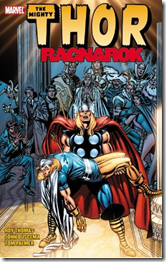 So, thanks to the likes of Jack Kirby and Stan Lee, many of the players were familiar to me – Odin, Thor, Loki, Balder, Frigga, Tyr, Vidar and others (to give them their Marvel names) – but, as I said, I’d never actually read any versions of the actual legends and to be honest I didn’t really expect to do so this time either except to research this article – I imagined that Byatt would do the same of most of her fellow authors who have tackled the myths for Canongate or those who updated The Mabinogion for Seren Books – but what I got was a straightforward retelling on the story, and I can’t pretend that I wasn’t a little disappointed by that, but there’s nothing an author can do to satisfy every reader’s expectation. Thankfully there was more to the book, though.
So, thanks to the likes of Jack Kirby and Stan Lee, many of the players were familiar to me – Odin, Thor, Loki, Balder, Frigga, Tyr, Vidar and others (to give them their Marvel names) – but, as I said, I’d never actually read any versions of the actual legends and to be honest I didn’t really expect to do so this time either except to research this article – I imagined that Byatt would do the same of most of her fellow authors who have tackled the myths for Canongate or those who updated The Mabinogion for Seren Books – but what I got was a straightforward retelling on the story, and I can’t pretend that I wasn’t a little disappointed by that, but there’s nothing an author can do to satisfy every reader’s expectation. Thankfully there was more to the book, though.
In a recent BBC interview Byatt says she does have much time for autobiography but that doesn’t mean she’s not been autobiographical in the past. Talking about one of her short stories she says:
['A Lamia in the Cevennes' gets] in a little bit of everything. It's got a bit of magic, a bit of English literature, a bit of autobiography – done sideways – a bit of a landscape…
and I think that’s a good way to talk about the story that is wrapped around the retelling of Ragnarok, a bit of autobiography – done sideways. The girl we meet in the opening chapter ‘A Thin Child in Wartime’ is clearly Byatt in all but name; she is never named and she’s kept at a safe distance in the third person. (Perhaps Byatt thought there were already too many names in the book and there are a lot of names: Yggdrasil, Rándrasill, Ginnungagap, Hrimfaxi, Sährimnir, Hlidskialf and several that I could actually pronounce.) The girl doesn’t appear as much as I would have liked – and even some of her interjections into the myths surprised me a little because I have forgotten that she was there – but she is what makes the book make sense for us, her innocence; her ignorance:
There was a thin child, who was three years old when the world war began. She could remember, though barely, the time before wartime when, as her mother frequently told her, there was honey and cream and eggs in plenty. She was a thin, sickly, bony child, like an eft[4], with fine hair like sunlit smoke. Her elders told her not to do this, to avoid that, because there was ‘a war on’. Life was a state in which there was a war on. Nevertheless, by a paradoxical fate, the child may only have lived because her people left the sulphurous air of a steel city, full of smoking chimneys, for a country town, of no interest to enemy bombers. She grew up in the ordinary paradise of the English countryside.
To set matters straight when Byatt says ‘her people’ she is excluding the thin girl’s father:
Her father was away. He was in the air, in the war, in Africa, in Greece, in Rome, in a world that only existed in books. She remembered him. He had red-gold hair and clear blue eyes, like a god.
[…]
At the end of every year the family sipped cider and toasted his safe return. The thin child felt a despair she did not know she felt.
Byatt’s younger sister, the novelist Margaret Drabble, fills in the details for us:
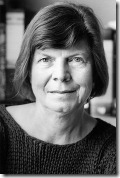 Sheffield is a dramatic city, built, like Rome, on seven hills. I was born there in 1939, on the eve of war, and our family was evacuated when I was only months old. … We lived in a semidetached Edwardian house with a cellar and an attic, in a neighbourhood called Nether Edge, only a couple of miles from the city centre. Nether Edge was indeed an edge: Sheffield is full of edges. … We didn’t move far. My father flew off with the RAF, and the rest of us spent the war years in another part of South Yorkshire, in a council house in Pontefract, a town famous not for heavy industry but for Liquorice Allsorts and Pontefract Cakes.[5]
Sheffield is a dramatic city, built, like Rome, on seven hills. I was born there in 1939, on the eve of war, and our family was evacuated when I was only months old. … We lived in a semidetached Edwardian house with a cellar and an attic, in a neighbourhood called Nether Edge, only a couple of miles from the city centre. Nether Edge was indeed an edge: Sheffield is full of edges. … We didn’t move far. My father flew off with the RAF, and the rest of us spent the war years in another part of South Yorkshire, in a council house in Pontefract, a town famous not for heavy industry but for Liquorice Allsorts and Pontefract Cakes.[5]
But back to the fiction. At some point, when she was a little older, her mother gives – or more than likely ‘lends’ – Byatt said in that same BBC interview – a book, “a solid volume, bound in green, and with an intriguing, rushing image on the cover, of Odin’s Wild Hunt on horseback tearing through a clouded sky amid jagged bolts of lightning, watched from the entrance to a dark underground cavern, by a dwarf in a cap, looking alarmed.” It was a book her – the thin girl’s and Byatt’s – mother had used “as a crib for exams in Old Icelandic and Ancient Norse.” That book was Asgard and the Gods by the German author Dr W Wagner. The book is available online here with illustrations.
This is not the first time the nameless thin girl has appeared in Byatt’s fiction. A small girl is the narrator of her semi-autobiographical story ‘Sugar’ (Sugar and Other Stories) in which she sets “out to write about her paternal grandfather [but] finds she must describe her father’s death, her mother, her other grandparents, and family history as it has been received by her, and she traces her imagination’s involvement with myth from the family myth to her favourite childhood reading, the Norse myth of origin and destruction.”[6] Discussing this story Celia Wallhead comments:
The figure of the returning hero, in his officer's uniform with his gold-winger buttons, has become a sort of icon for the daughter. She hopes to emulate him, at least in the parts that a female can, such a writing a book. But it is the mother who has bequeathed to her a love of reading and powers of narration. The mother's stories have created a composite myth which comes to form the narrator's sense of self and origins. The knowledge that it is partly myth and not fully truthful is what unsettles her.[7]
Of course this story includes events that Ragnarok doesn’t get to but the point I’m making is that the relationship of myth to reality is one that has deep roots in Byatt’s childhood. Writing in The Guardian Byatt makes an interesting observation:
Vladimir Propp's analysis of the structural forms of the folk tale is exciting because it makes precise and complex something we had already intuited – that the people and events are both finite and infinitely variable.[8]
''All English stories,'' Byatt explains in her short story ‘The Djinn in the Nightingale's Eye’, "get bogged down in whether or not the furniture is socially and aesthetically acceptable.”[9] The “flat” stories that make up the version of Ragnarok that she read as a child do not. For the most part people and things are synonymous with their function. The complex real world is reduced to two dimensions, literally and figuratively in that none of the characters have any real depth. That said, “[m]yth, like language, gives all of itself in each of its fragments.”[10]
Myths are concerned with origins and Byatt’s new novel is too, not simply the origin of the gods but the origin of herself: this is how I can to be a writer:
The thin child … devoured stories, with rapacious greed, ranks of black marks on white, sorting themselves into mountains and trees, stars, moon and suns, dragons, dwarfs, and forests containing wolves, foxes and the dark. She told her own tales as she walked through the fields, tales of wild riders and deep meres, of kindly creatures and evil hags.
This was a confusing time for the thin child. The world is not flat like a book. Okay, in some respects it is but there is movement below the surface, tectonic plates shifting. In personal terms we might talk of schemata, different ways of interpreting the world and the people in it: she is presented with the world she lives in, the world her father is a part of (the one that is at war), the world of her books, the world of her own imagination and the world of Christianity:
She was a logical child, as children go. She did not understand how such a nice, kind, good God as the one they prayed to, could condemn the whole earth for sinfulness and flood it, or condemn his only Son to a disfiguring death on behalf of everyone. This death did not seem to have done much good. There was a war on. Possibly there would always be a war on.
The view of the world taught to her every Wednesday when “the elementary school children went to the local church for scripture lessons” numbs her imagination. Byatt, like Beckett, has no problem purloining religious imagery if it suits her purpose but she is most certainly a professed atheist who openly describes herself as "anti-Christian." On the other hand “the stone giants [she read about in Asgard and the Gods] made her want to write. They filled the world with alarming energy and power.” Byatt has been a writer all her life but it’s interesting what she notes about herself in the introduction to On Histories and Stories:
 I am a writer, and I have always seen myself primarily as a writer, though I taught English and American Literature full-time in University College London between 1972 and 1984, and have taught literature at various times to adult classes and to art students. I have never taught ‘creative writing’. I think I see teaching good reading as the best way of encouraging, and making possible, good writing.[11]
I am a writer, and I have always seen myself primarily as a writer, though I taught English and American Literature full-time in University College London between 1972 and 1984, and have taught literature at various times to adult classes and to art students. I have never taught ‘creative writing’. I think I see teaching good reading as the best way of encouraging, and making possible, good writing.[11]
As a child Byatt was severely handicapped by asthma, something I can relate to. If this is explicitly mentioned in Ragnarok I missed it (although she does describe the child as “sickly” and mentions the child’s lungs struggling with “the fug” [not fog] on their return to the city) but as I’ve already said this is a semi-autobiographical work. Suffice to say because of this Byatt spent more time in bed than would have been considered normal for a child of her age but she has always regarded the illness that chained her to her bed as a great blessing as this enabled her to be properly devoted to her books. In ‘The God I Want’ Byatt recalls:
At the age of six I lived almost continuously on a sandy island inhabited by an angry lion, a silver horse, twelve swans, Alexander the Great and myself. It is only just to point out – it is indicative, I am afraid, of my habit of mind – that if any of these creatures was God, it was myself.[12]
All writers are gods. It makes perfect sense to me that she would relate to and be inspired by them.
Up until this point I’ve dwelled on what is essentially a frame story, the child reader. After page 12 I’m afraid we begin to see less and less of her until the war is over on page 147. She pops up here and there but the bulk of the book actually is a straight retelling of the myths. I, personally, would have liked to have seen more of her because although the language used is beautiful the myths are still the myths and Byatt doesn’t interfere with the basic story although she does make some editorial decisions about what she will cover. Her choice of ending is noteworthy:
There were versions of this story in which the world, which had ended in a flat plane of black water, was cleansed and resurrected, like the Christian world after the last judgement. But the books I read told me that this could well be a Christian interpolation, and I found it weak and thin compared to all the brilliant destruction. No, the wolf swallowed the king of the gods, the snake poisoned Thor, everything was burned in a red light and drowned in blackness. It was, you might say, satisfactory.
And so that is how her version ends with a few gold chessmen floating and bobbing on the dark ripples.
Reader expectation, as I have said, is a terrible thing. On one level I was disappointed not to have been presented with a postmodern metafiction and I was going to say that if you wanted to learn about AS Byatt’s writing then this would probably not be the book I would recommend as your first choice. Having read it and read about her I’m not sure I agree with my earlier point of view. I think if you want to understand the later AS Byatt you could do no better than getting to know the girl that the author sprang from – now there's a mythical description if ever I wrote one.
Fairy tales end with happily ever after. Myths not so much. Reality is another ball game entirely. Two intertwined themes that apparently crop up in many of Byatt’s books are intimacy and identity and although the (semi, we’re told) autobiographical section of this book are fairly short and mostly focus on the child it is interesting to see how the mother is portrayed, “gallant and resourceful in wartime” – she worked as a teacher and although she’s seems to have elicited the affection of her charges she does come across as someone who was not especially comfortable with children – but a depressive afterwards. She provided her daughter with an “inexhaustible” supply of books including, significantly, Asgard and the Gods, although all Byatt says in the novel is that the thin girl “discovered” the book, reducing the significance of the mother’s role here, preferring to highlight the fact that the mother never actually read to her. After the war, demoted, as so many women were, to the lowly role of housewife, “[d]ailiness defeated her. She made herself lonely and slept in the afternoons. The thin child came to identify the word ‘housewife’ with the word ‘prisoner’.” Clearly the return home is something of a disappointment to both mother and daughter and hence something of an anticlimactic ending but in some respects this mirrors the end of the gods and one can see why additions were made to the original text to resurrect them so that the story ends on an upbeat. I actually think Marvel’s approach, to have the whole thing cyclical, was quite inspired.
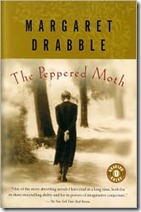 There are other things that are omitted from the narrative – her sister, significantly, for those who want to make more of the feud the press likes to talk about, (as recently as 13 July 2011 Margaret tells The Telegraph, “It’s irresoluble now. It’s sad, but our feud is beyond repair”[13]) – although to be fair in her own semi-autobiographical novel, The Peppered Moth, Drabble omits both her sisters and their brother – the youngest sister, Helen Langdon is an art historian; her brother, Richard Drabble, is a queen's counsel. One of the main areas of contention between the sisters has been their mother to whom Ragnarok is dedicated:
There are other things that are omitted from the narrative – her sister, significantly, for those who want to make more of the feud the press likes to talk about, (as recently as 13 July 2011 Margaret tells The Telegraph, “It’s irresoluble now. It’s sad, but our feud is beyond repair”[13]) – although to be fair in her own semi-autobiographical novel, The Peppered Moth, Drabble omits both her sisters and their brother – the youngest sister, Helen Langdon is an art historian; her brother, Richard Drabble, is a queen's counsel. One of the main areas of contention between the sisters has been their mother to whom Ragnarok is dedicated:
Ms. Drabble, her mother was a difficult and unpredictable person: ''She would shout at us. Then suddenly you would do something that you thought was terrible, and she would find it amusing or forgivable. Anyone in her right mind would have argued with my mother. She shouted at everybody. Some of the things she said were very much like an Alan Bennett character.'' While praising Mr. Bennett's ''brilliant miniature portraits,'' she said, ''I wanted to give her a better hearing than that.''
In [The Peppered Moth], she said, ''I was able to see her very much in context, as somebody who wasn't just a single eccentric, bad-tempered woman, but as someone who suffered the disappointments of a whole generation.''[14]
This doesn’t seem terribly different to the mother Byatt talks about:
Her mother, Kathleen Marie, now dead, was a bright working-class girl who fought her way to Cambridge, but gave up teaching "for her children." Their mother's anger at being a housewife cast a terrible pall over all four Drabble children.
Antonia, the eldest, felt "panic" about the outside world, and says matter of factly that she didn't speak to anyone voluntarily until she was about 16. "I had a strong sense of not knowing how to behave socially, handed down from my mother's anxiety about having got herself right out of her class. I always knew I had on the wrong clothes." Her mother's childhood had also been grim, and she was "nervous and neurotic, always screaming. Later in life she would be sick crossing the coal fields, it was so dirty and horrible to her."[15]
We only get glimpses of this in Ragnarok. We’re only meant to. It gives some context to the thin girl’s reading of Asgard and the Gods though and is necessary.
This is an interesting approach to this book, the writing of which she admits she struggled with at first. Her solution works but not perfectly, not for me anyway. I would have liked to see the thin girl make more connections between the real world and the mythical one she is so wrapped up in. There are some, like her trying to reconcile the ‘good’ Germans who wrote the book with the ‘bad’ ones who were at war with them but I would have thought that she might compare the mother figures in the myth, in particular Frigg with her own. “Frigg was a mother and also a power. She had set her will to make her son invulnerable…” and I can’t help comparing that with Byatt’s mother telling her, at the age of five, “Of course, you will go to Cambridge.” Intense value was placed on "cleverness" in the Drabble family. The handsome absent father, also, coincidentally, a graduate of Cambridge, crops up more often in the book but he’s also something of a shadowy figure, never fully realised.
There is no doubt that this was a labour of love. The passages are vivid and imaginatively descriptive, for example, this description of Yggdrasil, the World-Ash:
 Pools formed in the pits where the branches forked; moss sprouted; bright tree-frogs swam in the pools, laid delicate eggs and gulped in jerking and spiralling wormlings. Birds sang at the twigs' ends and built nests of all kinds - clay cup, hairy bag, soft hay-lined bowl, hidden in holes in the bark. All over its surface the tree was scraped and scavenged, bored and gnawed, minced and mashed.
Pools formed in the pits where the branches forked; moss sprouted; bright tree-frogs swam in the pools, laid delicate eggs and gulped in jerking and spiralling wormlings. Birds sang at the twigs' ends and built nests of all kinds - clay cup, hairy bag, soft hay-lined bowl, hidden in holes in the bark. All over its surface the tree was scraped and scavenged, bored and gnawed, minced and mashed.
or this bit talking about Loki’s daughter, Jörmungandr, who takes the form of a giant snake:
She played a game of her own in lonely bays. She swam out to the smooth bulk of water, lay along the wave and rode in with it, muscles slack, floating like flotsam and jetsam. When the waves rose in a crest, the snake rose with it, liquid eyes glittering like the coins of sunlight on the surface, arching herself to swoop down with the white water full of air and light until snake and wave hissed on the sand together and rolled idle.
or this section where Odin’s world and the real world blur:
Odin was the god of the Wild Hunt. Or of the Raging Host. They rode out through the skies, horses and hounds, hunters and spectral armed men. They never tired and never halted; the horns howled on the wind, the hooves beat, they swirled in dangerous wheeling flocks like monstrous starlings. Odin’s horse, Sleipnir, had eight legs: his gallop was thundering. At night, in her blacked-out bedroom, the thin child heard sounds in the sky, a distant whine, a churning of propellers, thunder hanging overhead and then going past.
You could open the book anywhere and find other eminently quotable passages and that’s basically what I did to find those three. The bottom line, though, is, if you have absolutely no interest in myths, this short book will feel like a long read and the best writing in the world wouldn’t be able to save it, but if you are interested or at least open to the possibility you might be pleasantly surprised. I was.
The book ends with a short essay, ‘Thoughts on Myths’ which was reprinted in full in The Guardian here and you can read an excerpt from the novel itself at Google Books here. It is published by Canongate here in the UK, Grove in the States, Knopf in Canada, Penguin in Australia and I would imagine will be pretty much available everywhere.
REFERENCES
[1] AS Byatt, ‘Happily ever after’, The Guardian, 3 January 2004
[2] Book Drum annotations to Possession, p.9
[3] Those Who Sit Above In Shadow, Marvel Universe Wiki
[4] I’m assuming that Byatt here is talking about a salamander: “An imaginary or immaterial being of human form living in fire; an elemental of the fire; that one of the four classes of nature-spirits which corresponds to the element fire, the others being called sylphs, undines, and gnomes.”– Wordnik, definition 2
[5] Margaret Drabble, ‘Tales of the City’, The Sunday Times, 1 October 2006
[6] Jane Campbell, A.S. Byatt and the Heliotropic Imagination, p.103
[7] Celia M. Wallhead, A.S. Byatt: Essays on the Short Fiction, p.39
[8] AS Byatt, ‘Happily ever after’, The Guardian, 3 January 2004
[9] AS Byatt, The Djinn in the Nightingale's Eye: Five Fairy Stories, p.239 quoted in Rosalind Ballaster, Fabulous Orients: Fictions Of the East in England, 1662-1785, p.375
[10] AS Byatt, On Histories and Stories: Selected Essays, p.126
[11] AS Byatt, On Histories and Stories: Selected Essays, p.1
[12] AS Byatt, ‘The God I Want’, The God I Want, quoted in Christien Franken, 'The Turtle and its Adversaries: Gender Disruption in AS Byatt's Critical and Academic Work' in Richard Todd and Luisa Flora (eds), Theme Parks, Rainforests And Sprouting Wastelands: European essays on theory and performance in contemporary British fiction, p.198
[13] Cassandra Jardine, ‘Margaret Drabble: “It’s sad, but our feud is beyond repair”’, The Telegraph, 13 July 2011
[14] Mel Gussow, ‘For Mother, No Escape From the Past; A Margaret Drabble Novel Traces Her Family's Dreams And Disappointments’, The New York Times, 28 May 2001
[15] Mira Stout, ‘What Possessed A.S. Byatt?’, The New York Times, 26 May 1991

 Amy Krouse Rosenthal is an author of adult and children’s books. She is the host of the radio show Writers’ Block Party on WBEZ Chicago Public Radio and you can read that blog here.
Amy Krouse Rosenthal is an author of adult and children’s books. She is the host of the radio show Writers’ Block Party on WBEZ Chicago Public Radio and you can read that blog here.


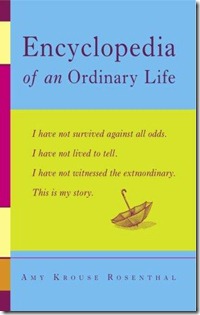

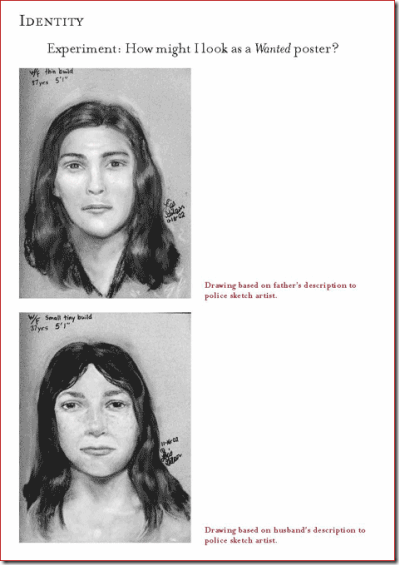



 Sheffield
Sheffield


